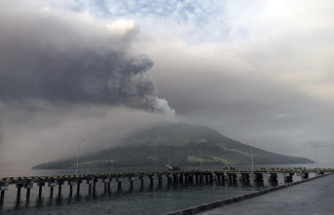Darmstadt (dpa/lhe) - Hessian specialists continue to fear illegal trade in extremely climate-damaging, fluorinated greenhouse gases. At the request of the German Press Agency, the Darmstadt regional council, which is responsible for the state, announced that there is a regular search for companies that offer work on refrigeration and air conditioning systems without the necessary certification. "Here, the probability is significantly higher that the refrigerants come from illegal sources, since maintenance companies must present a certificate of operation when purchasing refrigerants." Almost 80 such companies were written to.
Since the middle of the year, specialists at the regional council have been monitoring manufacturers, dealers and supply chains of the so-called F-gases, which are partly responsible for global warming and are far more harmful than carbon dioxide. The competence team first checked all 22 submitted dealers in a register of the European Commission. In principle, these would bring the F-gases onto the market legally.
In a large part of the companies, however, changes were found in the required certificates of competence for the employees, which were not communicated despite the required notification. For almost 40 percent, the company certifications should have been updated. In addition, there were a good 100 applications for certification in 2022, significantly more than the average of recent years.
The controls were only made possible by a change in the law in 2021. These so-called F-gases are used, among other things, in air conditioning systems, heat pumps or as a propellant for sprays and for foaming and are limited in the EU and by German law. According to the Federal Environment Agency, depending on the substance, these gases have a very strong effect on the climate. The effect is 100 to 24,000 times greater than with carbon dioxide. The gases were developed as a replacement for ozone-depleting chlorofluorocarbons (CFCs).












